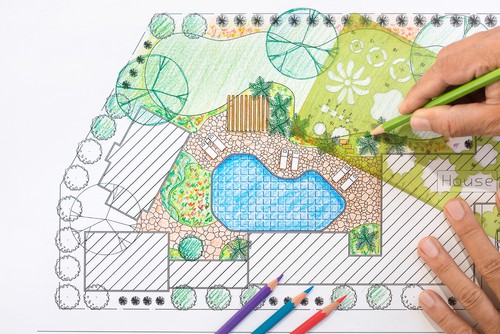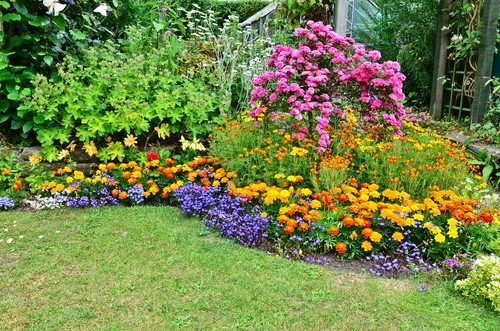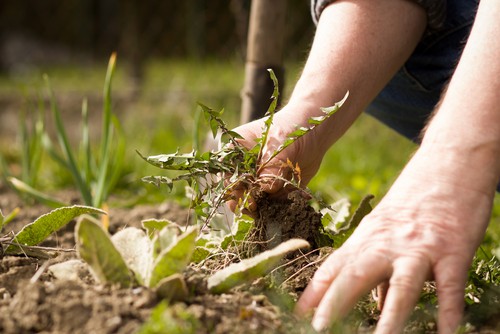Last updated on April 25th, 2022
Our site is reader supported, this means we may earn a small commission from Amazon and other affiliates when you buy through links on our site.
Today gardens have transformed beyond a simple and spacious lawn with rows of plants adorning the back garden. Border gardens have become so much more thanks to the cultivation of small space gardening schemes. Such development now affords homeowners and renters alike the freedom to cultivate privacy and boundaries with their border gardens in spaces of any size and can be a great alternative to planting a simple hedge.
Gardening brings with it multiple benefits, and creating a border garden is no different. By taking advantage of gardening you can improve your overall health. Regardless of the size of your border garden, growing your own boundaries, shrub walls and privacy screens require you to move about regularly, which offers exposure to sunlight and fresh air as well as mild exercise.
When you take advantage of border spaces you are no longer constrained because of a nearby neighbour, a large garden area with no division, or a street outside your garden. By making use of border spaces you can muffle sounds nearby, keep out debris and add protection for other areas of your garden.
If you have household pets, they too can benefit from the garden too, as pets (much the same as people) enjoy nibbling on fresh flowers. Birds, bees and butterflies will all come around to enjoy the flowers too.
That being said, below are some top tips to consider when creating your border garden.
Create a plan and make a note of areas of shade and sun so that you can choose plants that will thrive

Consider how long each part of your border area is and whether it is in full sunlight throughout the day and seasons of the year. You will need to know (before you plant) whether sun-loving plants will receive enough sun or not.
The layout you choose should be designed so that it gives you the height you want and the density you need. For example, if you want to create a border garden that gradually decreases in height with each subsequent layer of flowers, find plants that grow within certain heights. These final height specifications are often found written on the label of the plants and you are able to check when buying them.
Check out our recommended plants for shade
Check out some of our favourite recommended grasses for shade
Decide on a shape, such as curved edges or straight borders

Plan the layout of your borders based on the size of the space you have available. Straight edges are of course appealing visually, but if your garden is small, they will only enhance how small the space really is. Smaller spaces actually do better using curved borders, as pictured above. In fact, curved edges can make it seem like you have more space.
- To make a curved border, use a hosepipe to guide you when creating the edges because this will help you form an attractive, smooth border.
- To make a straight border, use a measuring tape or string line to get a consistent line.
Top Tip: Make sure the border width is the same along the entirety.
Check out our top recommended lawn edgers for cutting into the lawn easily to make borders
Get rid of any grass and weeds

Before you plant anything, get rid of unwanted existing grass. Grass patches will interfere with the other plants you want to grow and compete for resources. Don’t forget to remove any weeds, dense roots left behind from previous plants and rocks from the space. If your soil isn’t as healthy as it could be, mix some compost in it before you get to planting so that it has time to recuperate and improve.
Check out this article on how to improve the soil
Check out some of the best weeding tools to help clear borders of weeds
Consider your water drainage
Water drainage is important for any border garden, especially if your garden space is slanted, either fully or slightly. You need to consider how the runoff from other plants might land in the border space.
Remember, too, that new plants need water and if you apply compost or mulch, that should be given a quick sprinkle as well.
You can also consider installing an automatic watering system at the same time.
Create nice clean edges with a little trench between the border and lawn
The clearer the border, the more appealing it will be. So, whatever you plant, use an edging knife to prevent your lawn from getting into the border space. Make a trench at least 5-6cm deep between the two so that you can mow your lawn without irritating the border garden. Some people prefer the use of an edging material to help delineate too.
Planting shrubs, perennials, bedding plants and more
The final step is the design phase, where you place the plants in your desired combinations. You should invest in complementary colours for a subtle border or bold colours for something more striking. Mix in ornamental grasses for contrast and evergreen plants for structure, form and year-round interest. Also, consider planting wall climbers and planting bedding plants through summer to give a real colourful and lasting show over summer.
Once you know what you want, keep them in their pots and move them around the garden until you find the combination that is visually appealing. Once that is done, dig the holes to match their size, tease them gently from their pots and plant them before giving them a good watering.
Overall, in order to create a complementary border garden that adds interest all year and perfumes the air, you need to find plants that suit your style and size. Look for floral boundaries that bring wildlife and pollinators to your doorstep because they also help combat pests and you can be happy knowing you are also helping your local wildlife, as well as bees and butterflies.
Last update on 2025-04-02 / Affiliate links / Images from Amazon Product Advertising API




